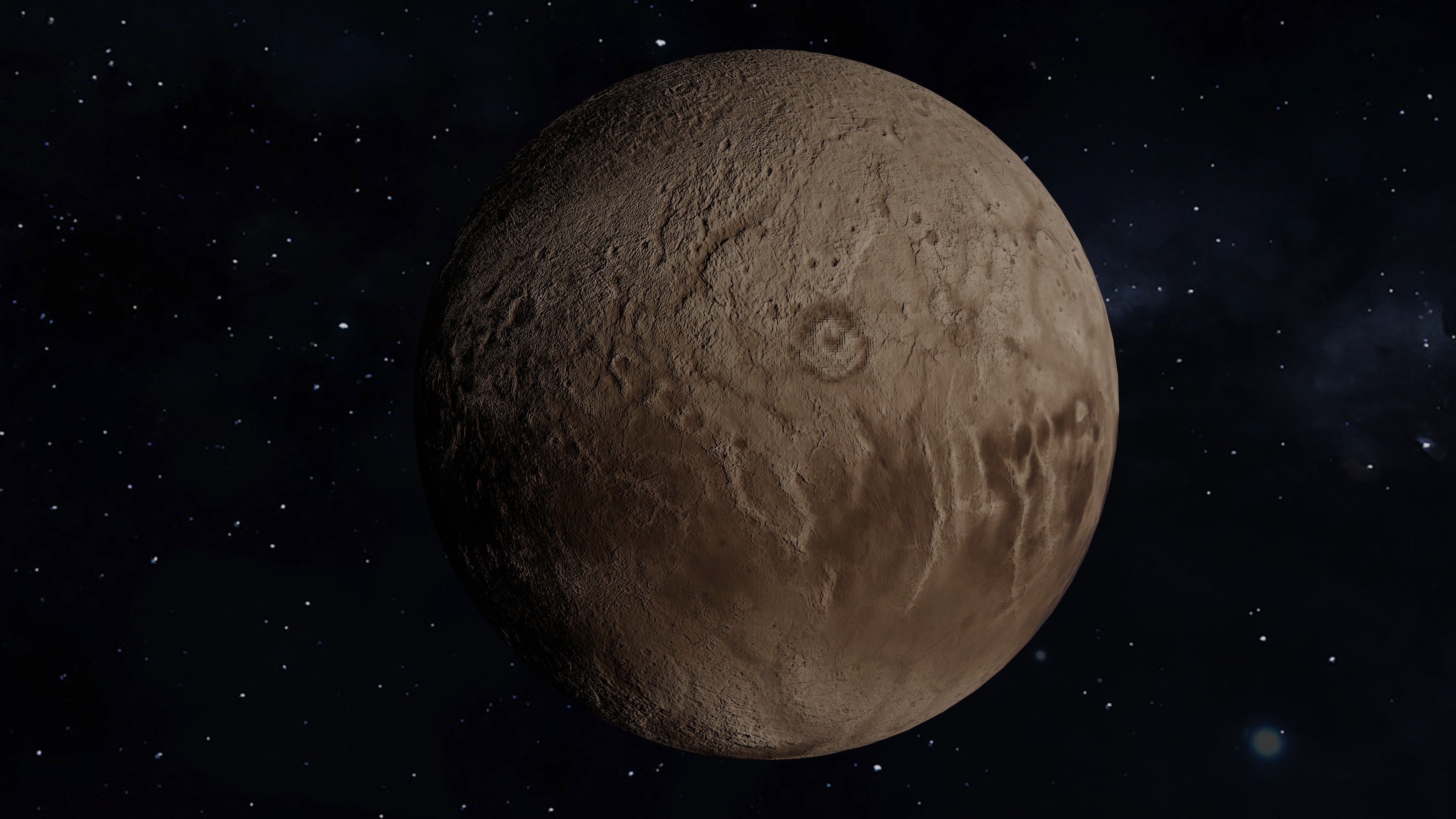Pluto has such a peculiar orbit that people have wondered how it exists. In our new work, we found that the orbital architecture of the giant planets lies in a Goldilock's zone that allows for the survival of Pluto and many other similarly peculiar trans-Neptunian objects. A slightly different arrangement of the giant planets would’ve ejected Pluto long ago from the solar system.
Views 3145
Reading time 3 min
published on May 24, 2023
Soon after Pluto was discovered in 1930, astronomers learned that its orbit overlaps Neptune's orbit and that it’s rather tilted, compared to the nearly common plane of the other planets. Propagating its orbit into the past and the future then revealed the surprising property that Pluto is protected from colliding with Neptune because of an orbital resonance condition known as a "mean motion resonance". This condition, which is owed to the very small gravitational force between Pluto and Neptune, ensures that at the time when Pluto reaches the same distance (from the Sun) as Neptune, the giant planet Neptune is nearly 90 degrees away in its orbit. Later another peculiar property of Pluto's orbit was discovered: Pluto comes to perihelion (where it’s closest to the Sun) always at a location well above the plane of Neptune's orbit. This is a different type of orbital resonance which is related to a phenomenon known as the "vZLK oscillation" (for von Zeipel, Lidov, and Kozai who studied this phenomenon in the three-body problem). In the late-1980s, with the availability of more powerful computers, numerical simulations revealed a third peculiar property. Pluto's orbit is technically chaotic, that is, small deviations of its initial conditions lead to exponential divergence of the orbital solutions over tens of millions of years. However, this chaos is limited and weak. It’s been found in numerical simulations that the two special properties of Pluto's orbit mentioned above persist over gigayear timescales, making its orbit remarkably stable, despite the chaos indicators.
In the past three decades, astronomers developed new hypotheses about the origin of Pluto's orbital properties. A key idea has gained support that Pluto was captured into the mean motion resonance with a migratory Neptune early in solar system history. A major prediction of this "planet migration" hypothesis has been verified by subsequent discoveries, particularly the discoveries of large numbers of so-called "Plutinos" which all share the same "mean motion resonance" condition as Pluto. This observational verification of the prediction has promoted the planet migration hypothesis to the status of planet migration theory. However, the orbital inclinations of Pluto and the Plutinos are only partially explained by the new theory. Pluto's orbital inclination is closely linked to its vZLK-type oscillation. So we reasoned that if we could understand better the conditions for Pluto's vZLK-type oscillation, perhaps we could solve the mystery of its inclination. We started by investigating the role of the other giant planets (Jupiter, Saturn and Uranus) on Pluto's orbit. For this investigation, we ran computer simulations in which we propagated Pluto's orbital motion under the gravitational forces of the Sun and Neptune, plus one or two of the other three inner giant planets. We found to our surprise that of the inner three giant planets, all three were necessary to stabilize Pluto’s orbit. But what is it about these planets that is essential to Pluto's vZLK-type oscillation? There are 21 parameters needed to represent the gravitational forces of Jupiter, Saturn, and Uranus on Pluto. This is a prohibitively large parameter space to explore. In order to make the investigation doable, we collapsed the 21 parameters into a single parameter by making some simplifications: represent each planet with a circular ring of uniform density, total mass equal to the planet's, and ring radius equal to the planet's semimajor axis. Then, the overall effect of Jupiter, Saturn, and Uranus can be represented by a single parameter called J2, and this overall effect is equivalent to that of an "oblate Sun". Through systematic study of this simplified model of the solar system, we discovered Pluto's vZLK-type oscillation is possible only in a narrow range in the J2 parameter, a kind of "Goldilock's zone"; bordering that zone is a very chaotic sea. In other words, there is a fortuitous arrangement of the masses and orbit sizes of the giant planets that allows a stable Pluto.
This result indicates that, during the planet migration era in solar system history, the conditions for Trans-Neptunian objects changed in such a way as to promote many of them - including Pluto - into the stable vZLK-type oscillation state. It’s likely that Pluto's inclination originated during this dynamical evolution. In future studies we hope to discover the dynamical mechanism for the origins of high orbital inclinations such as Pluto’s.
Currently, there are at least sixty vZLK oscillators known amongst approximately four hundred known Plutinos; it’s estimated that hundreds more remain to be discovered. We are looking forward to forthcoming larger, deeper surveys of the outer solar system that will uncover these hidden siblings of Pluto. Their properties will help us understand better the origins of the architecture of the solar system.
Original Article:
Malhotra, R., & Ito, T. (2022). Pluto near the edge of chaos. Proceedings of the National Academy of Sciences, 119(15). https://doi.org/10.1073/pnas.2118692119
 Earth & Space
Earth & Space



